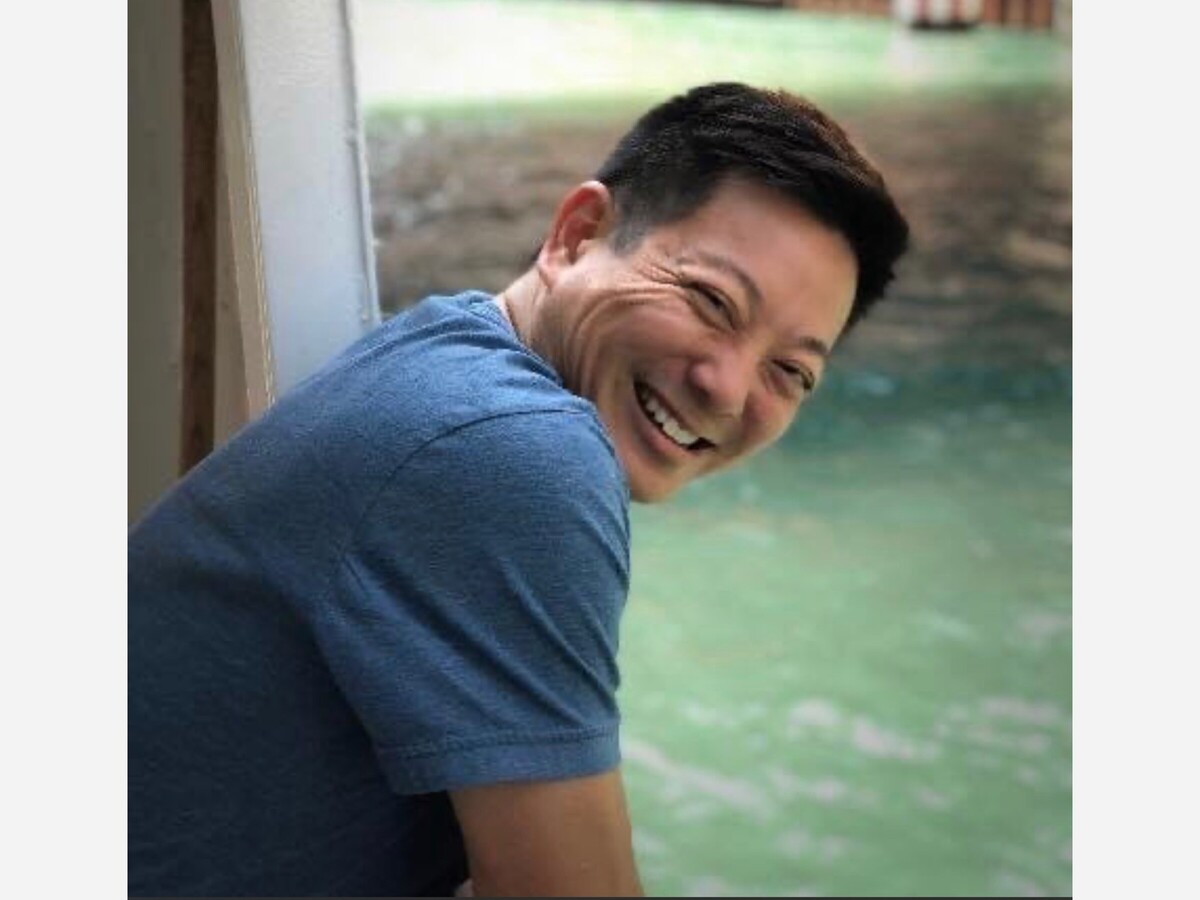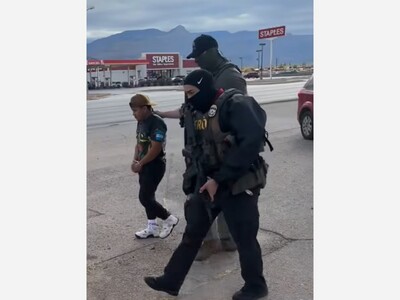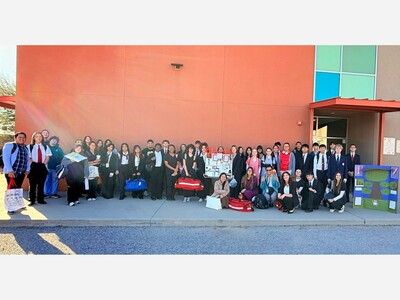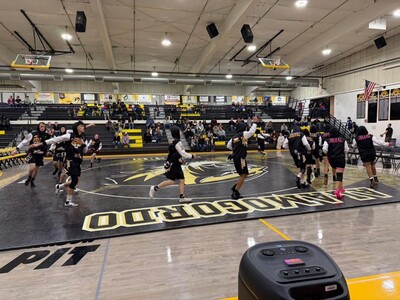Guest Commentary: Trump Justice and the 6 Co-conspirators by Jay Kuo
In a guest commentary by Jay Kuo he discusses the 6 co-conspirators and the details of the most recent indictment of Donald Trump…
“At long last, there’s a federal indictment against Trump over January 6. It’s powerful, chock-full of information including some new damning facts, and happens to run a coincidental number of pages: 45.
Much has already been written about the importance of this moment, and some great legal minds already have delved deep into the substance of the charges. I encourage you to read the excellent piece by Prof. Joyce Vance on how best to read the indictment, which puts it all in plain English, and of course then to read the indictment itself. It’s worth it to take the time to bear careful witness to history.
Today I want to highlight a few key, initial and broader takeaways from the indictment:
- The nature of the conspiracies alleged, including how they are interrelated;
- The roles and identities of the co-conspirators;
- The blow dealt to Trump’s likely “advice of counsel” defense;
- The names of those curiously absent, for now, from the indictment;
- Mike Pence’s likely crucial role in ultimately obtaining a conviction; and
- The karmic beauty of the judge who was just assigned to the case.
That’s a lot to cover, so let’s jump right in.
Three conspiracies, and attempted obstruction of Congress
The heart of the case lies in a trio of conspiracies that track what I have discussed before based on what the target letter Trump received had previewed:
- A conspiracy to defraud the United States;
- A conspiracy to obstruct the Electoral Count by Congress; and
- A conspiracy against rights, namely the right to have your vote count.
Added to this is a count against Trump for actually obstructing (or in his case, attempting to obstruct) Congress.
I should note that the conspiracies all arise out of the same set of facts. In the indictment itself, there’s a long section detailing Trump’s and his co-conspirators’ efforts to knowingly spread election conspiracies and falsehoods, to organize and execute the fake elector scheme, and ultimately to try to stop or delay the electoral count in Congress.
Those facts support Count One for Conspiracy to Defraud the United States. Then the indictment incorporates by reference those same facts to support Count Two (Conspiracy to Obstruct an Official Proceeding) and Count Four (Conspiracy Against Rights), with Count Three being the attempted obstruction of Congress itself.
That means that the evidence to be presented by prosecutors, in the form of communications and documents, witness testimony and physical evidence, will overlap to support all three conspiracies, even though they are each considered a separate, chargeable offense.
It’s helpful to remember at this point that a conspiracy involves more than one person, a criminal plan, and at least one concrete action taken in furtherance of that plan. When the government charges a conspiracy, it is a broad charge. It sweeps up anyone who was part of the planning, even if they themselves didn’t take any action in furtherance of it. And people can join the conspiracy after it has begun.
Here, the indictment lists six co-conspirators, but per DoJ custom does not name them. These people are likely either to become defendants in the case later or in another separate case, or to flip on their co-conspirators under a deal. And you definitely do not want to be referenced as an co-conspirator in the indictment against the guy at the top.
The six co-conspirators are nearly all Trump lawyers. If I were to make a list of the co-conspirators in the scheme to overturn the election, they would include (but not be limited to) all of the people described in the indictment. It’s useful to lay out how Jack Smith has characterized these folks, so we can get a good sense of the full cast of characters.
Co-Conspirator 1, an attorney who was willing to spread knowingly false claims and pursue strategies that the Defendant’s 2020 re-election campaign attorneys would not.
This one is worth just $100 on Legal Jeopardy: “Who is ‘Rudy Giuliani’?” In an earlier post, I detailed Giuliani’s efforts to spread election lies in states like Georgia, all the while smearing and ruining the lives of election workers Ruby Freeman and Shaye Moss, who get a shout-out in the indictment for being unjustly targeted.
Co-Conspirator 2, an attorney who devised and attempted to implement a strategy to leverage the Vice President’s ceremonial role overseeing the certification proceeding to obstruct the certification of the presidential election.
Easy peasy. This is John Eastman. He wrote the infamous six-point coup memo, conveniently laying the plan out for prosecutors and juries to understand. Remember, a federal judge has already ruled that Eastman’s communications were not protected by attorney-client privilege because he likely committed two federal crimes—conspiracy to defraud the U.S. and conspiracy to obstruct Congress, both of which are included in the indictment.
Co-Conspirator 3, an attorney whose unfounded claims of election fraud the Defendant privately acknowledged to others sounded “crazy.” Nonetheless, the Defendant embraced and publicly amplified Co-Conspirator 3’s disinformation.
The “crazy” gives this one away. That’s “kraken” attorney Sidney Powell, the one who announced and spread insane conspiracies about Venezuelan software on Dominion Voting Machines. The indictment underscores the fact that after Trump called her theories “crazy,” he still pushed them out hard. That will figure heavily into his guilty state of mind.
Co-Conspirator 4, a Justice Department official who worked on civil matters and who, with the Defendant, attempted to use the Justice Department to open sham election crime investigations and influence state legislatures with knowingly false claims of election fraud.
This takes us into the plot within the DoJ, and straight to the main bad guy there, Jeffrey Clark. Clark tried to oust the acting AG and get Trump to appoint him in his place so that he could throw the entire weight of the Department behind false election claims to try to legitimize them. He’s in deep trouble.
Co-Conspirator 5, an attorney who assisted in devising and attempting to implement a plan to submit fraudulent slates of presidential electors to obstruct the certification proceeding.
This guy is less known to the public because he was so behind-the-scenes. But his name is all over the fake elector scheme. For $500 in “Coup Co-Conspirators,” the answer is Kenneth Chesboro, based on a reference in paragraph 54 of the complaint: “The plan capitalized on ideas presented in memoranda drafted by Co-Conspirator 5, an attorney who was assisting the Defendant’s Campaign with legal efforts related to a recount in Wisconsin.” It’s definitely Chesboro who wrote the referenced memoranda.
Okay, so what about co-conspirator six? I’ve scoured all the blogs and write-ups, and nobody knows for sure whom this refers to:
Co-Conspirator 6, a political consultant who helped implement a plan to submit fraudulent slates of presidential electors to obstruct the certification proceeding.
Co-conspirator six could be a lot of different people, but until we know more, this will remain a mystery.
A few further thoughts on the people we can now ID. This is the group that White House “Team Normal” counsel referred to as “Team Crazy.” They were the ones behind the most outlandish and unfounded conspiracy claims around the election, the ones who cooked up a scheme to thwart the electoral count, and the ones who plotted to assail the voting rights of millions of Americans. They argued for authoritarian measures, like seizing voting machines and invoking the Insurrection Act, to keep Trump in power. Importantly, five out of six of them are lawyers, which leads me to my next point.
Trump’s advice of counsel defense is looking doomed
We don’t know for certain yet what defenses Trump will deploy, but we can make some good, educated guesses. One of them will be “advice of counsel,” that is, that Trump was acting upon the advice of his lawyers and, gosh, he was just listening to them and doing what they said to do.
Trump loves walls, and this argument will run straight into one. You see, advice of counsel doesn’t fly if the lawyers themselves were in on the crime. In other words, if the lawyers were co-conspirators with the Defendant on the plot, as the indictment alleges, this defense isn’t available. It’s a bit like trying to hide your communications behind the attorney-client privilege when your lawyer helped you commit the crime.
Because Trump will try to raise this as a defense, he will have the burden of proving that the defense is available to him. But time and again, he has lost on the question of whether he was working with or through his lawyers to commit crimes. That’s why his attorney John Eastman had to turn over his emails. It’s why his attorney Evan Corcoran had to testify before the grand jury and bring in his notes.
So there’s a certain method to Jack Smith’s naming, as co-conspirators, a group of scheming Trump lawyers who were out doing his bidding, spreading election lies, ginning up fake elector slates, and writing down the steps of the coup for everyone to follow. Trump can’t rely on their counsel as a defense, especially when he knew what they were up to while he led the charge.
About those missing names…
Sometimes it’s as interesting to see who has been left out of the story as it is to see who made the cut. And there are indeed some key names missing among the coup co-conspirators. It makes you wonder if they have cut deals and are cooperating, or if they are considered lower down the priority list, meaning Smith could indict them later. Or maybe there just isn’t enough evidence to include them, at least for now. Smith emphasized in his press conference that investigations are continuing.
Among Trump’s legal team, for example, there were people like Jenna Ellis who accompanied Rudy Giuliani on his tour de farce to the swing states. Also missing is the a person whose name I never can spell correctly, Boris Epshteyn (reads it three times to make sure it’s right…). He is a Trump lawyer who wrote a damning email noting that “‘alternative’ votes is probably a better term than ‘fake’ votes”then added a smiley emoji for good measure.
There were other non-lawyer organizers within the White House and in Congress of the “Green Bay Sweep,” which was the overt plan to delay the electoral count. This would include former Trump aide Peter Navarro, who is facing Contempt of Congress charges. It could include some members of the Freedom Caucus, depending on how much they knew when and specifically whether they knowingly joined the conspiracy.
Then there’s former White House Chief of Staff Mark Meadows, the pivotal go-between for all of this. He’s barely mentioned in the indictment, but from what there is, it seems either that he spilled some beans to the grand jury or is actively cooperating.
The fact that the co-conspirator list isn’t longer shouldn’t worry us, but it should worry others. This is just the first indictment, and it’s “limited” to Trump for a very clear reason: He is trying to win re-election and use the victory to undo the federal prosecutions, so there is an urgency to get the case tried before the election. Loading the case down with lots of other defendants would defeat that important goal.
Mike Pence is a critical witness, with contemporaneous notes
One thing that struck me while reading the indictment was how central a character former vice president Mike Pence is to the story. According tothe Washington Post, Pence’s name appears more than 100 times in the charging document.
Critically, it appears Pence has receipts. In his conversations with Trump, Pence wrote down notesof what was said between them. This is evidentiary gold, and it helps eliminate the “he said / he said” problem. Trump, should he foolishly take the stand as he has suggested he might, could be tempted to deny the substance of the conversations he had with Pence. Or he could simply say he doesn’t recall.
But when Pence takes the stand and if Trump’s lawyers question his truthfulness, those notes will become important. They may be hearsay, but they can come into evidence, for example, under an exception to the rule, including as prior consistent statements used to rebut any suggestion that Pence is lying. The notes, by the way, are detailed and damning. So you can bet the jury will believe Pence on this. After all, why write down something other than what was being said, especially if you believed it was important to get it all down?
Here are a few really important, new pieces of information that come from those notes:
- On December 29, 2020, Trump told Pence that the Justice Department was “finding major infractions”—but this was untrue, and Trump knew it was untrue. His Department had said exactly the opposite. Was he lying here to pressure Pence to go along with the coup?
- On January 4, 2021, Trump repeated his false claims of widespread election fraud. Pence questioned Eastman’s proposal to send the election results back to the states, asking if it was “defensible.” Eastman admitted that “nobody’s tested it before,” and Pence responded to Trump, “Even your own counsel is not saying I have that authority.”
- The indictment also details several phone calls between Pence and Trump in which Trump kept up the pressure on Pence to go along with the conspiracy, but Pence kept refusing. During one call on January 1, 2021, Trump tells Pence, “You’re too honest.”
That last one a big admission by Trump when you think about it. It indicates that he knew what he was asking Pence to do was dishonest. Because the state of mind for conspiracy to obstruct Congress is whether Trump acted “corruptly,” his admitting that the scheme required Pence to be dishonest is a really big tell.
The indictment also catalogs many ways in which Trump kept up a public pressure campaign against Pence. He even raised the false hope among the gathered crowds at the Ellipse that Pence might go along with him, even though Pence had been unequivocal in rejecting his role in the plot. That false hope allowed Trump to increase the stakes for his followers, who later violently attacked the Capitol, culminating in Trump’s infamous tweet that caused the rioting to surge:
Mike Pence didn’t have the courage to do what should have been done to protect our Country and our Constitution, giving States a chance to certify a corrected set of facts, not the fraudulent or inaccurate ones which they were asked to previously certify.
After that tweet, chants of “Hang Mike Pence” erupted from the crowd as they pressed forward, and the Secret Service had to move Pence to a secure location.
The judge assigned to the case makes me smile
One final, very happy note. As we learned in the case in Florida, sometimes the random assignment of judges works very much against justice, with the Trump-appointed Judge Aileen Cannon assigned to the Mar-a-Lago classified documents case. She had previously shown herself favorable to Trump, and one big fear is that her trial date in May 2024 could easily slip on the calendar, due to motions and discovery issues, putting it well past the November 2024 election.
But sometimes the universe works for the greater good. In D.C., the system assigned the Hon. Tanya Chutkan, an Obama appointee serving on the federal bench since 2014, who was confirmed 95-0 by the Senate. Judge Chutkan used to be a public defender, and she could be Trump’s worst nightmare.
For starters, she has direct experience with January 6 cases. She is the only judge who consistently has imposed sentences longer than prosecutors have even asked for.
And she’s handled one big Trump case, too. After he left office, Chutkan rejected his efforts to block the release of records to the January 6 Committee. In her opinion, she wrote these amazing, concise words: “presidents are not kings, and plaintiff is not president.” The federal appeals court in D.C. affirmed her, and the Supreme Court rejected Trump’s appeal.
Add to this an inescapable truth: Trump’s main weapon in all of this is time. He hopes to run out the clock, win the election, and use the power of his office to undo the charges. But judges have a great deal of discretion in setting the trial schedule, and that could prove crucial here. The current median time to trial for a federal case in D.C. is a whopping 18 months, and that includes those that plead out. Were that schedule followed, it would put the trial well past the election.
But Judge Chutkan is known for being efficient and speedy, and she could set a much more aggressive timetable for the trial. As Eric Columbus, who was a lawyer on the January 6 Committee case, remarked on Twitter, “When I represented the @January6thCmte Judge Chutkan heard Trump’s attempt to block the committee’s efforts to get his official records. She moved fast. We won. She’s an excellent judge.”
The other consideration is sentencing. While Aileen Cannon might decide to go easy on her pal down in Florida, if Trump is convicted in D.C., Chutkan is unlikely to lean toward leniency, if her sentences for January 6 defendants is any indication. There is a good chance based on the sentencing guidelines for the crimes levied against Trump that she would actually order him incarcerated for what effectively would be the rest of his life.
And I gotta say, that a Black woman such as Judge Chutkan will have enormous and possibly final say over the fate of Donald Trump is deeply satisfying on a karmic level.”
You’re a free subscriber to The Status Kuo. I’m able to offer my time and work here and on social media due to the generosity of my paid subscribers, for about the cost of a latte once a month. Thank you in advance if you are able to support my efforts!
About the Guest Commentator: Jay Kuo Admitted before the Supreme Court and 9th Circuit. A.B. In Political Science (Stanford) J.D. (UC Berkeley). Board member, Human Rights Campaign. CEO of The Social Edge. Composer of Allegiance on Broadway.















